THE ETERNAL NATURALIST
Valley House Gallery is pleased to offer a number of early works by San Antonio artist, Jim Stoker.
Jim Stoker was born in 1935 in Nash, Texas, and reared in Atlanta, a rural town in East Texas. He received a BFA in Applied Art from The University of Texas at Austin in 1957, and an MA in painting, drawing, and printmaking from New Mexico Highlands University in 1962 where he studied with Elmer Schooley. Stoker painted throughout a teaching career which culminated in a 30-year tenure at Trinity University in San Antonio.

The Stoker works we are offering range from the early 1970’s to the early 1980’s, when he was teaching at Trinity University in San Antonio. Stylistically, in the early 70’s Stoker’s oil paintings tended towards representational landscapes with figures at work. His compositions often incorporated incongruous animals milling around the workers or the tools they used.
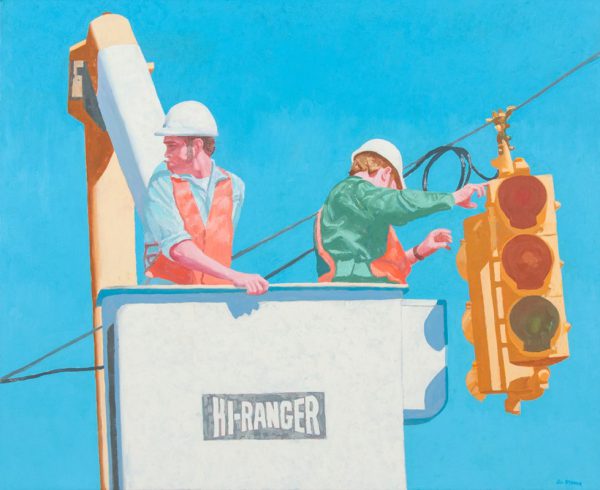
In the mid-70’s the subjects and style of his work changed to flat colorful interiors, resembling paper cut out collages more than paintings.
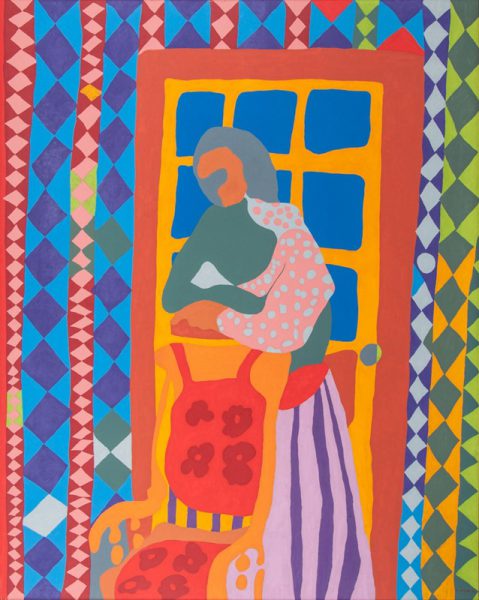
In the late 70’s and early 80’s, he and his wife would spend the Summers in Santa Fe, NM where he painted a series of paintings focusing on the architecture and its relationship to the natural occurring and the planted flora.
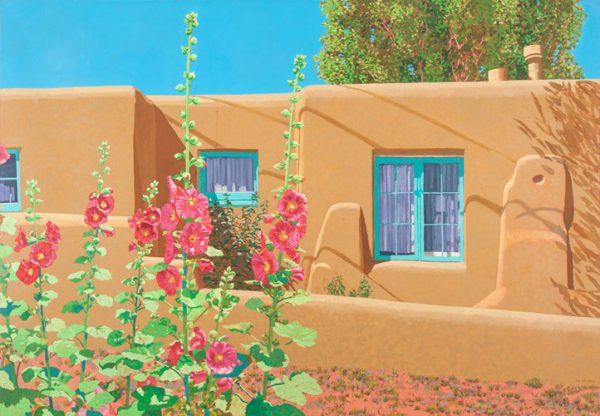
He later said of that time, “you used to see Hollyhocks everywhere in Santa Fe in the late 80’s. You would think it was the state flower there were so many. Now, you hardly see any when traveling around that area.”
His work became more representational in style and focused more on nature and the environment.
Jim and his wife Elouise are both naturalists who helped form the San Antonio, Texas chapter of the Sierra Club. Stoker’s efforts to protect the natural fauna and flora around San Antonio led to a series of paintings he titled No Place to Live:… The theme of this series pointed to the animals’ plight when humans are taking over their natural living spaces.

Jim’s current paintings primarily focus on the riparian zone of the Guadalupe river near a cabin that has been in his wife’s family for generations. He has created a unique technique he calls Confetti Splatter and uses it to place an underpainting for his naturalistic landscape compositions.
Visit FAE’S Artist Info page about Jim Stoke here. On FineArtEstates.com you can browse available artworks and read more about this Texas Artist.
*****
To see all available FAE Design Blog Posts, jump to the Design Blog Table of Contents.
To see all available FAE Collector Blog Posts, jump to the Collector Blog Table of Contents.
Sign up with FAE to receive our newsletter, and never miss a new blog post or update!
Browse fine artworks available to purchase on FAE. Follow us on Facebook, Instagram, or Twitter to stay updated about FAE and new blog posts.
For comments about this blog or suggestions for a future post, contact Kevin at [email protected].
Other FAE informational posts you may find helpful:
Fine Art Insurance 101
 Practical Tips for Safely Transporting Artwork
Practical Tips for Safely Transporting Artwork
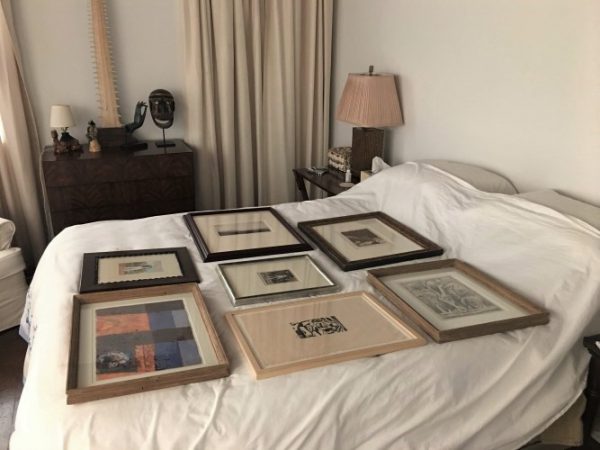 Temporarily Storing Artwork: A Case Study
Temporarily Storing Artwork: A Case Study
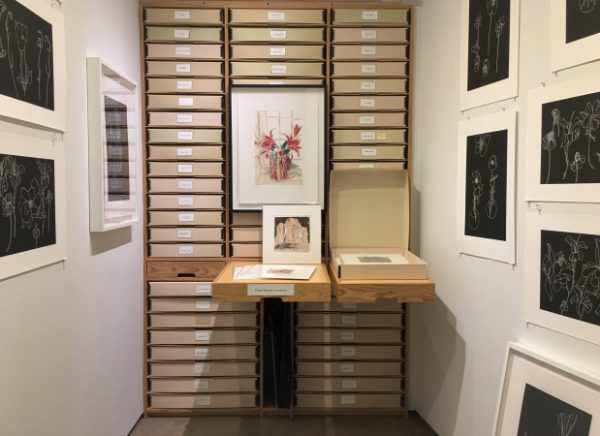 Four Artwork Storage Solutions
Four Artwork Storage Solutions
 Hanging and Framing FAQ’s
Hanging and Framing FAQ’s
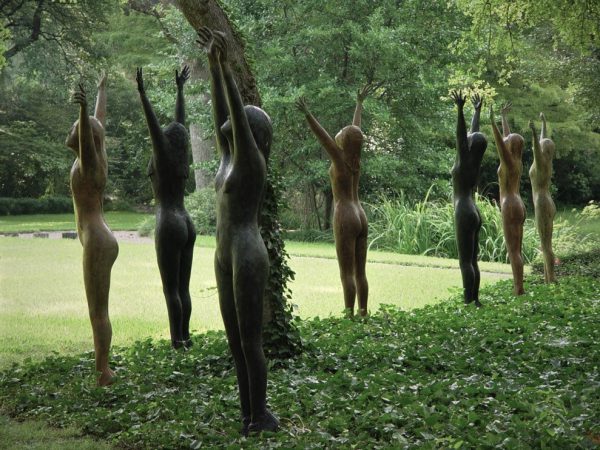 Siting Sculpture, Part One: Overview
Siting Sculpture, Part One: Overview
 Siting Sculpture: Part Two, A Case Study
Siting Sculpture: Part Two, A Case Study
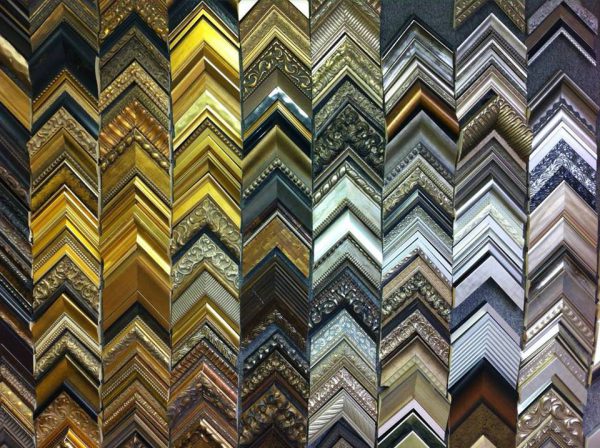 The Importance of a Proper Frame
The Importance of a Proper Frame
 When to Use UV Control Glazing
When to Use UV Control Glazing
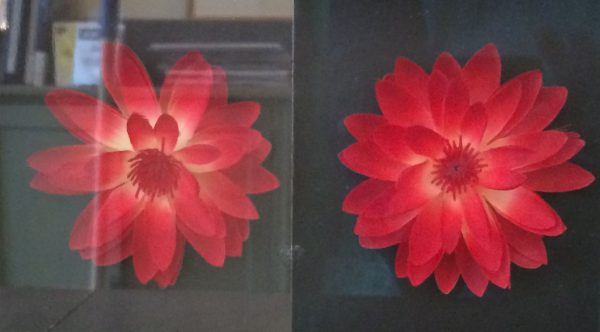 Reflection on the Problem of Reflections
Reflection on the Problem of Reflections
